Medieval History
It all started with the Minoans. Who were they though? Did they come for a reason? Where did they come from? When did they come? Why did they leave for Greece to begin with? The questions go on forever, but these are the typical ones. Who, what, where, when, and why. To be honest, no one really knows all of the answers. So much has been lost from war, fires, and age. Perhaps a good place to start is who were they?
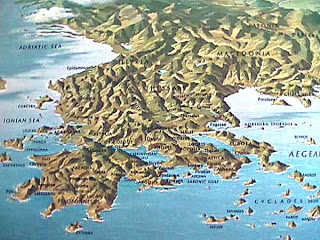 The Minoans were proto-Greeks, which means they were the Greek peoples who formed the Greeks we know of today. They weren't called Greeks though, in fact, we don't even know their real name. We know that they were an ancient Indo-European culture who came down from the northern Greek peninsula, possibly through Macedonia and they are known best for being a sea culture, and having settled on the island of Crete around 2700 B.C., they are particularly ancient as well as sophisticated. In fact, they are thought to be the first sea culture, as well as the first peoples at all to have sailed on the ocean successfully, and where a chance encounter with the Syrians sailing nearby coasts much later in the 1900s B.C. would actually encourage full-blown sailing to be practiced and perfected by most Mediterranean cultures thereafter. But who were they? We don't know, and we might never know unless evidence is dug up. Now the reason why this article features Minoans and Mycenaeans is because of how they clashed before the end of the Bronze Age.
The Minoans were proto-Greeks, which means they were the Greek peoples who formed the Greeks we know of today. They weren't called Greeks though, in fact, we don't even know their real name. We know that they were an ancient Indo-European culture who came down from the northern Greek peninsula, possibly through Macedonia and they are known best for being a sea culture, and having settled on the island of Crete around 2700 B.C., they are particularly ancient as well as sophisticated. In fact, they are thought to be the first sea culture, as well as the first peoples at all to have sailed on the ocean successfully, and where a chance encounter with the Syrians sailing nearby coasts much later in the 1900s B.C. would actually encourage full-blown sailing to be practiced and perfected by most Mediterranean cultures thereafter. But who were they? We don't know, and we might never know unless evidence is dug up. Now the reason why this article features Minoans and Mycenaeans is because of how they clashed before the end of the Bronze Age.
-
It is thought that the Minoans had come as explorers and in search of new ways of living. It seemed as though the entire world was migrating in the late Bronze Age, where from 4000 B.C. until 2000 B.C. everyone just seemed to be in search of their future home and try this new fad called agriculture. The Minoans were wildly successful later on, but they began very secretively. No one even knew they existed until the 1800s B.C., when in 1900 B.C. some scattered encounters with the Minoans occurred with the Syrians but no one believed them. But they were found, and what a city!
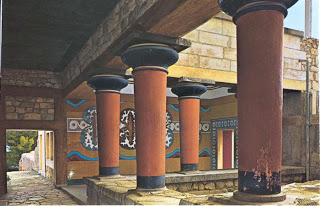 On the left shows a section of the restored Palace at Knossos in Crete. The palace itself was fairly large, but what made it so unique was its decorations. Every inch of every wall was colored and covered in frescoes depicting sea creatures and Poteidon (Poseidon) their sea god. They were truly a culture who loved art, and they were truly talented. Below is some pottery with their unique designs, most of which depict sea creatures and bulls, as the bull was sacred to the Minoans. Ancient Minoans revered the bull, and would celebrate with bull cups filled with fine wine and play games, one of which included leaping over the head of a raging, running bull and flipping over, landing on its butt. If the person was able to complete this flip, landing on its butt and stand for a moment, he would be recognized for his skill in the game. This is an odd game, but shows how that actively worshipped, celebrated, and even played games all at the same time. I don't believe this is a common mixture of these activities, which may show the easy-going nature the culture had. Unlike later Greeks, who felt as though the gods were constantly out to get them or curse everyone.
On the left shows a section of the restored Palace at Knossos in Crete. The palace itself was fairly large, but what made it so unique was its decorations. Every inch of every wall was colored and covered in frescoes depicting sea creatures and Poteidon (Poseidon) their sea god. They were truly a culture who loved art, and they were truly talented. Below is some pottery with their unique designs, most of which depict sea creatures and bulls, as the bull was sacred to the Minoans. Ancient Minoans revered the bull, and would celebrate with bull cups filled with fine wine and play games, one of which included leaping over the head of a raging, running bull and flipping over, landing on its butt. If the person was able to complete this flip, landing on its butt and stand for a moment, he would be recognized for his skill in the game. This is an odd game, but shows how that actively worshipped, celebrated, and even played games all at the same time. I don't believe this is a common mixture of these activities, which may show the easy-going nature the culture had. Unlike later Greeks, who felt as though the gods were constantly out to get them or curse everyone.
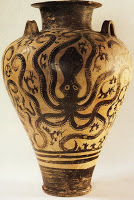
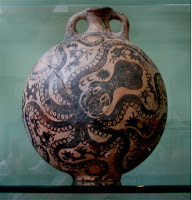
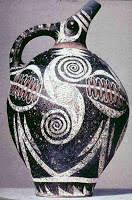
Around 1800 B.C. the Minoan culture flourished, and with their discovery by the adventurous Syrians, who began boldly sailing all around the Mediterranean coasts, overseas trade boomed, and across the entire Mediterranean the Minoans were fantastically popular. All over the place in Syria all the way down to Canaan there is evidence of Minoan goods. Egypt was the only place who did not trade with any of them, as they would not come out of their xenophobia til the late 1400s B.C. For more on Egypt, read my two articles "Ancient Egypt: Narmer Menes and the Rise of the Pharaohs" and "Empires of the Hittites, Hurrians, and Middle Egypt: Bronze Age Superpowers" for more cultural information.
 The Minoans became the popular kid on the block, but around 1700 BC and 1600 B.C. there were two large disasters on Crete, although the evidence is controversial at best, some historians believe that there may been an earthquake or volcano eruption on one or both of these occasions. Some say there may have been an invasion, but around 1500 B.C. the volcano called Thera (Santorini) erupted, which was the largest natural disaster ever to occur on the Earth to this day, so chances are, since the Minoan palaces at Knossos, Phaistos, Malia, and Kato Zakros were utterly destroyed, it was probably the volcano. But like the troopers they were, they picked themselves back up on both occasions and remained the popular kid on the block. Everyone wanted to be them, but one culture wanted them more, and around early 1500 to late 1400 B.C., the Minoans went to war.
The Minoans became the popular kid on the block, but around 1700 BC and 1600 B.C. there were two large disasters on Crete, although the evidence is controversial at best, some historians believe that there may been an earthquake or volcano eruption on one or both of these occasions. Some say there may have been an invasion, but around 1500 B.C. the volcano called Thera (Santorini) erupted, which was the largest natural disaster ever to occur on the Earth to this day, so chances are, since the Minoan palaces at Knossos, Phaistos, Malia, and Kato Zakros were utterly destroyed, it was probably the volcano. But like the troopers they were, they picked themselves back up on both occasions and remained the popular kid on the block. Everyone wanted to be them, but one culture wanted them more, and around early 1500 to late 1400 B.C., the Minoans went to war.
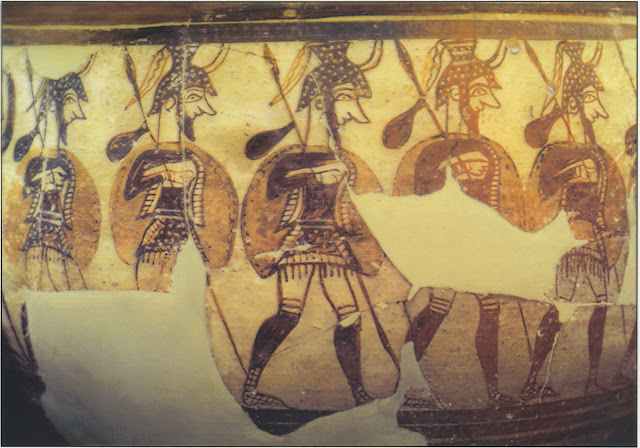 RISE OF THE MYCENAEANS: Have you ever met someone truly greedy, savage, and narcissistic? A real piece of human garbage, I mean, someone so selfish and debased that you would feel ashamed to be affiliated with them, perhaps? I say it like this, because every so often that kind of person is born to the world, and for some reason they live mean, angry, destructive lives. Some people are willing to go to any lengths to get what they want, and sometimes they even feel justified for reasons that bewilder any person who is capable of compassion. This is how I would describe the Mycenaeans: True savages that were hell-bent on a life that suited them at everyone else's expense. The Mycenaeans had a money hunger that few Yankee Traders could ever boast, a desire to fight and kill more than any Celt, and stomachs that could soak up more booze than the Norsemen. When you spot a Mycenaean moving in to the house for sale next door to you, you're wife is already calling your real estate agent to sell your house and move far, far away.
RISE OF THE MYCENAEANS: Have you ever met someone truly greedy, savage, and narcissistic? A real piece of human garbage, I mean, someone so selfish and debased that you would feel ashamed to be affiliated with them, perhaps? I say it like this, because every so often that kind of person is born to the world, and for some reason they live mean, angry, destructive lives. Some people are willing to go to any lengths to get what they want, and sometimes they even feel justified for reasons that bewilder any person who is capable of compassion. This is how I would describe the Mycenaeans: True savages that were hell-bent on a life that suited them at everyone else's expense. The Mycenaeans had a money hunger that few Yankee Traders could ever boast, a desire to fight and kill more than any Celt, and stomachs that could soak up more booze than the Norsemen. When you spot a Mycenaean moving in to the house for sale next door to you, you're wife is already calling your real estate agent to sell your house and move far, far away.
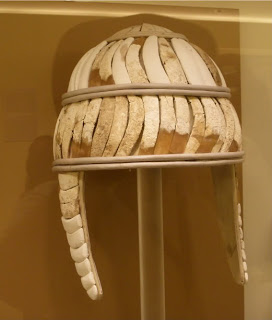
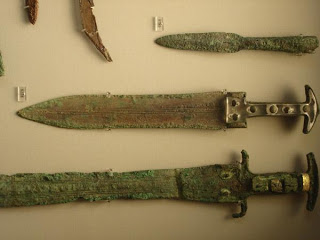
-
-
-
-
-
-
-
-
-
-
-
-
-
-
This is not a very optimistic description for a culture that probably deserves a good bit of respect, but truly they were the most unoriginal, barbaric, mean-spirited culture to really ever grace human history. Now the Mycenaeans arrived in Greece probably using the same route that the Minoans took (through the north and ventured south through Greece). They moved fairly quickly through Greece around 2000 B.C. and finally settled in the Peloponnese south of classical Athens around 1900 B.C. They certainly made it known to everyone that they were a warrior culture, and their entire life revolved around solely around their given clan and the clan activities such as fighting, drinking, conquering, enslaving, and hunting and gathering. Like the Hurrians in Mesopotamia around this same time period, they were true bullies. Immediately after arriving on the scene the Mycenaeans go rampaging through some of Greece. They set up forts at Pylos that were more like bunkers than anything, and repeated this process everywhere they went, setting up military command headquarters where ever they stopped, and it made no difference if people were living there. Those unfortunate enough to cross paths with the Mycenaeans were killed and the survivors were enslaved, simply being shipped off to a nearby bunker to create weapons and armor and to maintain their financial records since they were illiterate and refused to learn to read.
-
What warrior should learn to read! Certainly not a prideful Mycenaean! No way, they made others do it for them and only had a few of them learn enough of the language being used to make sure the slaves were not tricking them. Eventually the language they had been speaking was adapted into a written language known as Linear A and B, where Linear A was the Minoan language both written and spoken, and Linear B was an adapted version of the Minoan language to suit the spoken language of the Mycenaeans. Yes, I did just give it away. The Minoans and Mycenaeans clash and you already know who won.
Now the Mycenaeans were truly brutal and savage. They constantly roamed Greece and enslaved every person they found, and typically stole all of their possessions and would actually copy their arts and crafts for their businesses. This is why it was stated up above that they were unoriginal, because they were so devoted to perfecting the art of killing and conquering, they actually chose to counterfeit the artistic designs of the cultures they enslaved and completely took over their businesses rather than use their imagination and hard work. This earned them piles of money without ever doing any work, so they were fully capable of perfecting their own art of conquering and enslaving while maintaining their counterfeited businesses. This is also how the Mycenaeans figured out how to sail-- after all, seeing is believing! The picture above depicts a Mycenaean bunker palace, since they were a combination of a military bunker filled with many soldiers and slaves, but were also palaces by tradition, for even though they were savages they were somewhat aristocratic in their way of life, clan hierarchy and the ways of affluence. These palaces beheld more riches and luxuries that were stored away for lack of room than what most kings ever get in lifetimes. Much of what they stole they also used for every day amusement and overall profit. The many bunker palaces the Mycenaeans built were built with defense in mind, though, so no matter how aristocratic they were, they were all still savages at heart. They always seemed to prepare for a siege or an enemy faction to come on a glorious mission of revenge, yet there are few, if any, references of this ever happening with other cultures. In fact, to further portend their barbarism and pettiness, the Mycenaeans were made up of clans and each of the clan's members typically held allegiances to their clan leaders, yet those leaders so often turned on other nearby forts and attacked other leaders in their pursuit of greed and power that it is widely thought that much of the Mycenaeans simply destroyed themselves to a point of virtual disarray. Nearly all of the enemies the Mycenaeans ever encountered were their own blood-kin of neighboring clans.
FALL OF THE MINOANS: By the late 1400s B.C., the Mycenaean clans had conquered all of Greece one-by-one, except for Minoan Crete, for although they knew how to sail, the Minoans were not a petty culture by any means. Some of the clans took a liking to the coasts of Syria but those cultures were geared for repelling Mycenaean invasions and very little happened. Instead, they simply sailed to those cultures and imitated their arts, effectively stealing other cultures designs without conquering them. The difference was that they were not particularly talented in the arts outside of killing, so without conquering and enslaving the opposition, they failed in those businesses, having produced only cheap knock-offs that no one wanted. Instead, the clans focused their attention on the Minoans. The Minoans by the late 1400s B.C. were extremely popular to all of the surrounding cultures, and their fame cost them dearly. In staggered rounds, the Mycenaean clans simply wore out the Minoans. Few, if any, of the Mycenaean clans fought in any organized way since each clan had its own leaders and none of the leaders between clans would submit to another. Instead, they all attacked Minoan Crete like rampaging lunatics and slowly wore the Minoans out. During the beginning invasions by the clans, Minoan Crete was crippled from a natural disaster, probably the volcano Thera (Santorini) erupting. The Mycenaean clans fought many battles against the weakened Minoans until Minoan Crete was conquered about 50 years later at around 1450 B.C.
MINOANS ENSLAVED AND THE SEA PEOPLES ATTACK: The Minoans were enslaved and treated brutally. Everything they ever made was copied; every wall fresco, every pot, every statue, every cloth; simply everything was copied and the Minoans were forced to replicate their arts for Mycenaeans business. Not only that, but the Mycenaean oral language was adapted with the Minoan written language forming the script known as Linear B. Using this script, the Minoans were force to write for the Mycenaean clans since none of them wanted to learn to read. Instead, the syllables were made to be easily recognizable by most Mycenaeans so that they at least had some idea if the Minoans decided to play tricks on their finances.
It was not long after the fall of Minoan Crete that the end of the Bronze Age would come crashing to an end, and the Dark Age would follow closely behind. After the Hittites and Egyptians finished fighting around 1280s B.C., but this time the Mycenaeans were extremely wealthy from conquering the Minoans. The Mycenaeans had spread out, in fact, all the way to Hittite territory in their fort called Apsos (Ephesus) as well as a few others speckling the coasts. The Hittites had been just gearing for full blown war when the Sea Peoples came. These seafarers entered through the Mediterranean Sea and somehow (and ambiguously) annihilated every single culture from Greece and stopped shy of Assyrian territory. The Israelites were the only culture untouched by these people since they had been led on their Biblical Exodus for 40 years, and arrived to a devastated countryside.
-
Egypt, on the other hand, put up a very good fight. Those clever Egyptians attempted to use guile and won over many of the Sea Peoples during the battle. However, they still fell, and along with all of the other cultures of the Mediterranean and coasts of Syria down to Egypt were crushed and scattered. Bubble cultures formed, which is a term describing how the remaining people banded together in an attempt to reform the cultures they were once part of. This was primarily how the cultures came back to life, but it took a long time, but out of it all arose the classical Greeks in the 400-300s B.C. from the surviving Mycenaeans and Minoans, the Rise of the Assyrian Empire came swiftly in 934-605 B.C. once the Hittites were scattered and their empire gone, the Israelites returned home from their 40 years of wandering and prospered greatly under Kings Saul, David and Solomon in 1079-931 B.C., the First Persian Empire rose to power from 550-330 B.C. after being called by neighboring cultures to snuff out the heinous Assyrian Empire around in 605 B.C., and the list goes on. While the Sea Peoples attack ended the Bronze Age and brought with them the first Dark Age, the Iron Age followed after this dull period of scattered cultures and ushered in a new wave of civilizations that we know of today.
--For more on the classical Greeks that the Mycenaeans and Minoans turned into after the Sea Peoples attack, read my articles called "Lacedaemonians and Athenians: Battles at Thermopylae and Salamis" about the Spartans and Athenians fighting the Persian Empire and also read
"The Greek Golden Age and the Great Peloponnesian War" which is about the Athenians fighting the Spartans in a legendary war that shook all of Greece.
--And if you'd like to know more about some other bad boy underdog cultures of the Bronze Age, definitely read my article "Empires of the Hittites, Hurrians, and Middle Egypt: Bronze Age Superpowers" about all of the best ancient cultures all clashing in fearsome wars and cultural struggles against each other!
- Medieval Europe Part 2: Of Kings And Killers Pt. 2-- Here Come The Norsemen!
My other blogs are:http://religion-by-kyle.blogspot.comhttp://astronomy-by-kyle.blogspot.com???? Of Kings and Killers Pt. 2 Here Come the Norsemen! Medieval Europe Part 2WHO ARE THE NORSEMEN? : VIKINGS! Virtually everyone knows about the Vikings in some...
- The Greek Golden Age And The Great Peloponnesian War
My other blogs are:http://religion-by-kyle.blogspot.comhttp://astronomy-by-kyle.blogspot.comTHE ELEPHANTVERSUSTHE WHALEThe Great Peloponnesian War:Athens vs. Sparta and the End of the Golden Age As the name implies, this was not a smooth war. How can...
- Lacedaemonians And Athenians: Battling Persians At Thermopylae And Salamis
My other blogs are:http://religion-by-kyle.blogspot.comhttp://astronomy-by-kyle.blogspot.comLacedaemonians and Athenians Battling Persians at Thermopylae and Salamis A great story then would be the events of the Persians vs. the Greeks up north,...
- Empire Of The Hittites: Battling The Hurrians And Middle Egypt-- Bronze Age Superpowers
My other blogs are:http://religion-by-kyle.blogspot.comhttp://astronomy-by-kyle.blogspot.comEmpire of the Hittites Battling the Hurrians and Middle Egypt Bronze Age Superpowers This is highly detailed article of the Hittites (or Hatti) specifically taken...
- Ancient Egypt: Narmer Menes And The Rise Of The Pharoahs
My other blogs are:http://religion-by-kyle.blogspot.comhttp://astronomy-by-kyle.blogspot.comThe Rise of Ancient Egypt Narmer Menes 3100 B.C. A Brief Essay on the Birth of EgyptThe thing about history is that it continually starts with one culture and...
Medieval History
Of Minoans and Mycenaeans: The Rise and Fall of Proto-Greeks and End of the Bronze Age
My other blogs are:
http://religion-by-kyle.blogspot.com
http://astronomy-by-kyle.blogspot.com
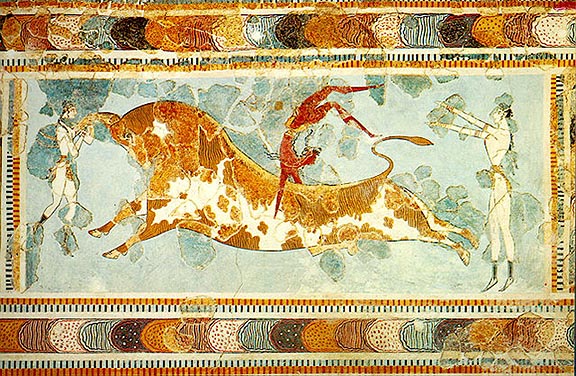 |
| Of Minoans and Mycenaeans The Rise and Fall of Proto-Greeks and the End of the Bronze Age |
 The Minoans were proto-Greeks, which means they were the Greek peoples who formed the Greeks we know of today. They weren't called Greeks though, in fact, we don't even know their real name. We know that they were an ancient Indo-European culture who came down from the northern Greek peninsula, possibly through Macedonia and they are known best for being a sea culture, and having settled on the island of Crete around 2700 B.C., they are particularly ancient as well as sophisticated. In fact, they are thought to be the first sea culture, as well as the first peoples at all to have sailed on the ocean successfully, and where a chance encounter with the Syrians sailing nearby coasts much later in the 1900s B.C. would actually encourage full-blown sailing to be practiced and perfected by most Mediterranean cultures thereafter. But who were they? We don't know, and we might never know unless evidence is dug up. Now the reason why this article features Minoans and Mycenaeans is because of how they clashed before the end of the Bronze Age.
The Minoans were proto-Greeks, which means they were the Greek peoples who formed the Greeks we know of today. They weren't called Greeks though, in fact, we don't even know their real name. We know that they were an ancient Indo-European culture who came down from the northern Greek peninsula, possibly through Macedonia and they are known best for being a sea culture, and having settled on the island of Crete around 2700 B.C., they are particularly ancient as well as sophisticated. In fact, they are thought to be the first sea culture, as well as the first peoples at all to have sailed on the ocean successfully, and where a chance encounter with the Syrians sailing nearby coasts much later in the 1900s B.C. would actually encourage full-blown sailing to be practiced and perfected by most Mediterranean cultures thereafter. But who were they? We don't know, and we might never know unless evidence is dug up. Now the reason why this article features Minoans and Mycenaeans is because of how they clashed before the end of the Bronze Age. -
It is thought that the Minoans had come as explorers and in search of new ways of living. It seemed as though the entire world was migrating in the late Bronze Age, where from 4000 B.C. until 2000 B.C. everyone just seemed to be in search of their future home and try this new fad called agriculture. The Minoans were wildly successful later on, but they began very secretively. No one even knew they existed until the 1800s B.C., when in 1900 B.C. some scattered encounters with the Minoans occurred with the Syrians but no one believed them. But they were found, and what a city!




Around 1800 B.C. the Minoan culture flourished, and with their discovery by the adventurous Syrians, who began boldly sailing all around the Mediterranean coasts, overseas trade boomed, and across the entire Mediterranean the Minoans were fantastically popular. All over the place in Syria all the way down to Canaan there is evidence of Minoan goods. Egypt was the only place who did not trade with any of them, as they would not come out of their xenophobia til the late 1400s B.C. For more on Egypt, read my two articles "Ancient Egypt: Narmer Menes and the Rise of the Pharaohs" and "Empires of the Hittites, Hurrians, and Middle Egypt: Bronze Age Superpowers" for more cultural information.
 The Minoans became the popular kid on the block, but around 1700 BC and 1600 B.C. there were two large disasters on Crete, although the evidence is controversial at best, some historians believe that there may been an earthquake or volcano eruption on one or both of these occasions. Some say there may have been an invasion, but around 1500 B.C. the volcano called Thera (Santorini) erupted, which was the largest natural disaster ever to occur on the Earth to this day, so chances are, since the Minoan palaces at Knossos, Phaistos, Malia, and Kato Zakros were utterly destroyed, it was probably the volcano. But like the troopers they were, they picked themselves back up on both occasions and remained the popular kid on the block. Everyone wanted to be them, but one culture wanted them more, and around early 1500 to late 1400 B.C., the Minoans went to war.
The Minoans became the popular kid on the block, but around 1700 BC and 1600 B.C. there were two large disasters on Crete, although the evidence is controversial at best, some historians believe that there may been an earthquake or volcano eruption on one or both of these occasions. Some say there may have been an invasion, but around 1500 B.C. the volcano called Thera (Santorini) erupted, which was the largest natural disaster ever to occur on the Earth to this day, so chances are, since the Minoan palaces at Knossos, Phaistos, Malia, and Kato Zakros were utterly destroyed, it was probably the volcano. But like the troopers they were, they picked themselves back up on both occasions and remained the popular kid on the block. Everyone wanted to be them, but one culture wanted them more, and around early 1500 to late 1400 B.C., the Minoans went to war.


-
-
-
-
-
-
-
-
-
-
-
-
-
-
This is not a very optimistic description for a culture that probably deserves a good bit of respect, but truly they were the most unoriginal, barbaric, mean-spirited culture to really ever grace human history. Now the Mycenaeans arrived in Greece probably using the same route that the Minoans took (through the north and ventured south through Greece). They moved fairly quickly through Greece around 2000 B.C. and finally settled in the Peloponnese south of classical Athens around 1900 B.C. They certainly made it known to everyone that they were a warrior culture, and their entire life revolved around solely around their given clan and the clan activities such as fighting, drinking, conquering, enslaving, and hunting and gathering. Like the Hurrians in Mesopotamia around this same time period, they were true bullies. Immediately after arriving on the scene the Mycenaeans go rampaging through some of Greece. They set up forts at Pylos that were more like bunkers than anything, and repeated this process everywhere they went, setting up military command headquarters where ever they stopped, and it made no difference if people were living there. Those unfortunate enough to cross paths with the Mycenaeans were killed and the survivors were enslaved, simply being shipped off to a nearby bunker to create weapons and armor and to maintain their financial records since they were illiterate and refused to learn to read.
-
What warrior should learn to read! Certainly not a prideful Mycenaean! No way, they made others do it for them and only had a few of them learn enough of the language being used to make sure the slaves were not tricking them. Eventually the language they had been speaking was adapted into a written language known as Linear A and B, where Linear A was the Minoan language both written and spoken, and Linear B was an adapted version of the Minoan language to suit the spoken language of the Mycenaeans. Yes, I did just give it away. The Minoans and Mycenaeans clash and you already know who won.
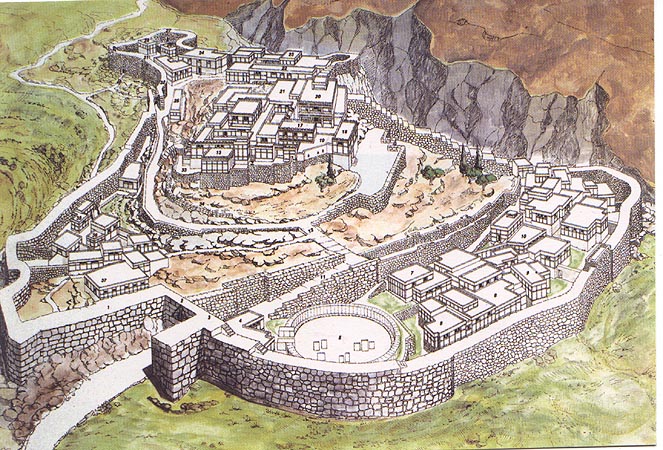 |
| This bunker palace was not a place for the weary wanderer to rest his feet. Armed to the teeth with many soldiers and ready to kill enemies by the droves, this is an example of the Mycenaean way of life: Kill, pillage, enslave, counterfeit. |
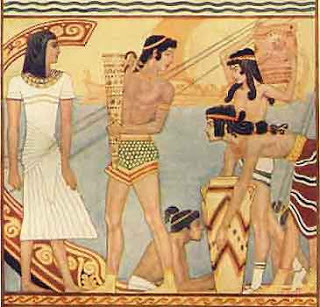 |
| Minoans |
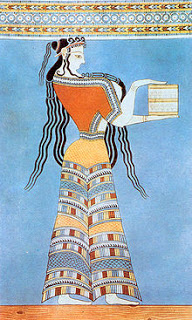 |
| Mycenaean woman |
It was not long after the fall of Minoan Crete that the end of the Bronze Age would come crashing to an end, and the Dark Age would follow closely behind. After the Hittites and Egyptians finished fighting around 1280s B.C., but this time the Mycenaeans were extremely wealthy from conquering the Minoans. The Mycenaeans had spread out, in fact, all the way to Hittite territory in their fort called Apsos (Ephesus) as well as a few others speckling the coasts. The Hittites had been just gearing for full blown war when the Sea Peoples came. These seafarers entered through the Mediterranean Sea and somehow (and ambiguously) annihilated every single culture from Greece and stopped shy of Assyrian territory. The Israelites were the only culture untouched by these people since they had been led on their Biblical Exodus for 40 years, and arrived to a devastated countryside.
-
Egypt, on the other hand, put up a very good fight. Those clever Egyptians attempted to use guile and won over many of the Sea Peoples during the battle. However, they still fell, and along with all of the other cultures of the Mediterranean and coasts of Syria down to Egypt were crushed and scattered. Bubble cultures formed, which is a term describing how the remaining people banded together in an attempt to reform the cultures they were once part of. This was primarily how the cultures came back to life, but it took a long time, but out of it all arose the classical Greeks in the 400-300s B.C. from the surviving Mycenaeans and Minoans, the Rise of the Assyrian Empire came swiftly in 934-605 B.C. once the Hittites were scattered and their empire gone, the Israelites returned home from their 40 years of wandering and prospered greatly under Kings Saul, David and Solomon in 1079-931 B.C., the First Persian Empire rose to power from 550-330 B.C. after being called by neighboring cultures to snuff out the heinous Assyrian Empire around in 605 B.C., and the list goes on. While the Sea Peoples attack ended the Bronze Age and brought with them the first Dark Age, the Iron Age followed after this dull period of scattered cultures and ushered in a new wave of civilizations that we know of today.
--For more on the classical Greeks that the Mycenaeans and Minoans turned into after the Sea Peoples attack, read my articles called "Lacedaemonians and Athenians: Battles at Thermopylae and Salamis" about the Spartans and Athenians fighting the Persian Empire and also read
"The Greek Golden Age and the Great Peloponnesian War" which is about the Athenians fighting the Spartans in a legendary war that shook all of Greece.
--And if you'd like to know more about some other bad boy underdog cultures of the Bronze Age, definitely read my article "Empires of the Hittites, Hurrians, and Middle Egypt: Bronze Age Superpowers" about all of the best ancient cultures all clashing in fearsome wars and cultural struggles against each other!
- Medieval Europe Part 2: Of Kings And Killers Pt. 2-- Here Come The Norsemen!
My other blogs are:http://religion-by-kyle.blogspot.comhttp://astronomy-by-kyle.blogspot.com???? Of Kings and Killers Pt. 2 Here Come the Norsemen! Medieval Europe Part 2WHO ARE THE NORSEMEN? : VIKINGS! Virtually everyone knows about the Vikings in some...
- The Greek Golden Age And The Great Peloponnesian War
My other blogs are:http://religion-by-kyle.blogspot.comhttp://astronomy-by-kyle.blogspot.comTHE ELEPHANTVERSUSTHE WHALEThe Great Peloponnesian War:Athens vs. Sparta and the End of the Golden Age As the name implies, this was not a smooth war. How can...
- Lacedaemonians And Athenians: Battling Persians At Thermopylae And Salamis
My other blogs are:http://religion-by-kyle.blogspot.comhttp://astronomy-by-kyle.blogspot.comLacedaemonians and Athenians Battling Persians at Thermopylae and Salamis A great story then would be the events of the Persians vs. the Greeks up north,...
- Empire Of The Hittites: Battling The Hurrians And Middle Egypt-- Bronze Age Superpowers
My other blogs are:http://religion-by-kyle.blogspot.comhttp://astronomy-by-kyle.blogspot.comEmpire of the Hittites Battling the Hurrians and Middle Egypt Bronze Age Superpowers This is highly detailed article of the Hittites (or Hatti) specifically taken...
- Ancient Egypt: Narmer Menes And The Rise Of The Pharoahs
My other blogs are:http://religion-by-kyle.blogspot.comhttp://astronomy-by-kyle.blogspot.comThe Rise of Ancient Egypt Narmer Menes 3100 B.C. A Brief Essay on the Birth of EgyptThe thing about history is that it continually starts with one culture and...
